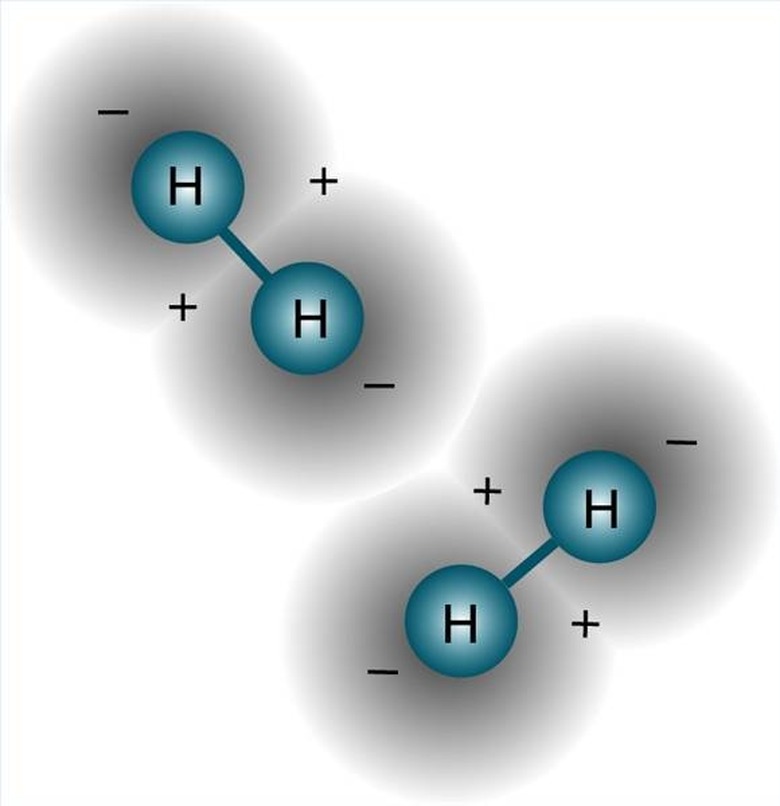Differences In Properties Of Halogens & Hydrogen
At first glance, it may look like hydrogen and the halogens are similar elements. With similar electron configurations and molecular properties (hydrogen and all halogen elements form diatomic molecules), there are definitely some parallels between hydrogen and the halogen elements. A closer look at these elements, however, reveals that hydrogen must remain separate from the halogen elements.
Types
Types
While hydrogen is a single element with unique properties of its own, the halogens are a collection of elements. There are five known halogen elements in total: fluorine, chlorine, bromine, iodine and astatine. The halogens occupy Group 17 on the periodic table.
Features
Features
Hydrogen and the halogens are all non-metallic elements, but they behave very differently. Hydrogen often combines with negative, non-metallic ions to form acids and organic molecules. Halogens, on the other hand, only form negatively-charged ions that react with metallic, positive ions to make ionic compounds like salts.
Similarities
Similarities
The principal similarity between hydrogen and the halogens is in electron configuration. Hydrogen has one electron in its electron shell, needing one additional electron to fill that shell. The halogens all have seven electrons in their outer electron shells. These electron shells all need eight electrons for completion, so the halogens are also missing a single electron. The effect of this is that both hydrogen and the halogen elements can form negative ions by the addition of one electron to the outer energy shell. Hydrogen, however, also forms a positive ion by losing its one electron; no halogen does this.
Identification
Identification
In its simplest natural state on Earth, hydrogen is a diatomic, molecular gas (H2). This gas is odorless, colorless and flammable. Of the halogens, only fluorine and chlorine are gases (F2 and Cl2, respectively) naturally on Earth. Both are toxic and fluorine is greenish in color, while chlorine is green. The other halogens are liquid (bromine) or solid (iodine and astatine) in nature.
Size
Size
One of the main underlying causes of the differences between hydrogen and the halogens is the size of the atoms involved. Hydrogen atoms are the smallest of all the elements, consisting of only one proton and one electron. Halogen atoms, in contrast, can be quite large. The smallest halogen is fluorine, whose atoms have nine protons and electrons, as well as 10 neutrons. The largest halogen, astatine, has 85 protons and 125 neutrons, giving atoms of that element a mass 210 times the size of a hydrogen atom.
Cite This Article
MLA
Brown, Laurel. "Differences In Properties Of Halogens & Hydrogen" sciencing.com, https://www.sciencing.com/differences-properties-halogens-hydrogen-5483879/. 24 April 2017.
APA
Brown, Laurel. (2017, April 24). Differences In Properties Of Halogens & Hydrogen. sciencing.com. Retrieved from https://www.sciencing.com/differences-properties-halogens-hydrogen-5483879/
Chicago
Brown, Laurel. Differences In Properties Of Halogens & Hydrogen last modified March 24, 2022. https://www.sciencing.com/differences-properties-halogens-hydrogen-5483879/
